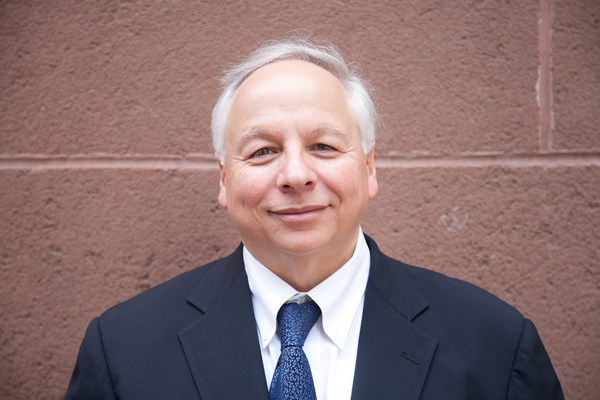It’s good to be on top, but in an increasingly competitive and prolonged low-rate environment, the watch words for this year’s Top Lenders might well be “cautious optimism.”
For those banks, credit unions and mortgage companies on Banker & Tradesman’s annual Top Lenders list, 2015 was a solid year, with many posting considerable increases over the prior year’s loan production in both commercial and residential loan categories.
While the interest rate environment continued to squeeze margins, Bay State lenders still benefitted from homebuyers looking to purchase and homeowners looking to refinance. And slow, but steady economic growth meant that there was plenty of business to be had in the Greater Boston area’s increasingly white-hot commercial real estate market.
Where residential mortgages were concerned, the Arlington-based Leader Bank came out on top of the list of banks, booking $666 million in single-family purchase mortgages and $260 million in condo purchases.
Along with low rates and a late-starting but strong purchase season, the bank undoubtedly also benefitted from its geographical location, said Jay Tuli, senior vice president and head of retail banking and residential lending.
“On the purchases in particular, the Boston economy is at a place now where it’s just attracting a lot of jobs. There are bigger announcements like GE, but it’s also just the number of startups and the number of foreign companies coming in and starting subsidiaries, there’s a lot of job growth,” Tuli said. “We’re fortunate to be on the eastern side of Massachusetts where most of the job growth is happening.”
Elsewhere in the state, Berkshire Bank maintained its Top Lender status with nearly $224 million in single-family purchase volume last year and $64.7 million in condo purchase volume. That amounted to about an 8 percent year-over-year increase in its condo purchase business and a small decline (1.4 percent) in single-family purchases.
In an email to Banker & Tradesman, Allan Costello, senior vice president and head of residential lending at Berkshire Bank, attributed the bank’s sustained residential loan production in part to the continued low interest rate environment, which also spurred a sustained interest in refinancing.
Bankers who fear a “credit union creep” might also look at credit union their counterparts. Digital Federal Credit Union made $81.5 million in single-family mortgage loan business last year, representing an increase of nearly 54 percent from 2014. And Jeanne D’Arc Credit Union did $68.9 million in mortgage loan volume last year, more than doubling its business from 2014.
Meanwhile, non-depository mortgage lenders beat out banks where both volume and numbers were concerned. Guaranteed Rate, which was virtually absent from the Massachusetts mortgage market as recently as five years ago, nabbed the top spot in its category for single-family purchases by volume, posting nearly $732 million worth of mortgage loans. That represented about a 32 percent increase from its prior year purchase volume. Guaranteed Rate also topped out its lender category in condo purchases, ending 2015 with $347.9 million worth of new condo purchase business.
Sleeping Well At Night
Where commercial mortgages are concerned, perhaps it’s unsurprising that the lion’s share of 2015’s Top Lenders were concentrated in and around Eastern Massachusetts. Eastern Bank claimed the lead with $278.2 million in commercial mortgages last year, nearly double its production from the prior year, and East Boston Savings Bank more than doubled its commercial mortgage production on a year-over-year basis to $226.4 million for 2015.
Middlesex Savings Bank and Cambridge Savings Bank, neither of which qualified as a Top Lender in 2014, muscled their way onto the list this year, with $132 million and $130 million, respectively, in commercial mortgage volume for 2015.
Thomas Farley, chief commercial banking officer at Middlesex Savings Bank, said the bank was particularly active in financing investment properties and owner-occupied real estate last year. He added that the bank also financed some hotels, attributing demand in that particular sector to high occupancy rates and hoteliers beefing up their business with more and newer rooms.
Richard Muraida, Rockland Trust’s lending center manager for its commercial banking division, particularly emphasized the larger transactions his bank did around Class B office space in the city of Boston.
And Doug Faithfull, chief lending officer at Cambridge Savings Bank, said CSB had benefitted from many of its preexisting customer relationships over the past few years.
But all that increasing commercial real estate activity – the luxury condos popping up all over town and the cranes increasingly dotting skylines in Southie and the Seaport District – has naturally also prompted worries that the market may be overheating. It’s no great secret, either: Listen in on any earnings conference call these days, and inevitably an investor will ask about the commercial real estate scene – particularly in Boston.
Muraida and Faithfull both spoke of competition in the marketplace – and in particular, of cash buyouts and refinances spurring some of their own borrowers to pay off loans ahead of schedule. John Migliozzi, executive vice president at East Boston Savings, spoke of non-recourse loans and high loan-to-value ratios, which he said his bank won’t touch.
On the whole, many of the Top Lenders shared a similar philosophy on lending, characterized by a willingness to work with borrowers, but not at the cost of credit quality.
“We tend to be fairly conservative about how we structure loans,” Faithfull said. “You lose opportunities during the hot times, but you can sleep at night and then you’re well positioned when things slow down to weather the storm.”
Click here to see the complete list of Top Lenders for 2015.







